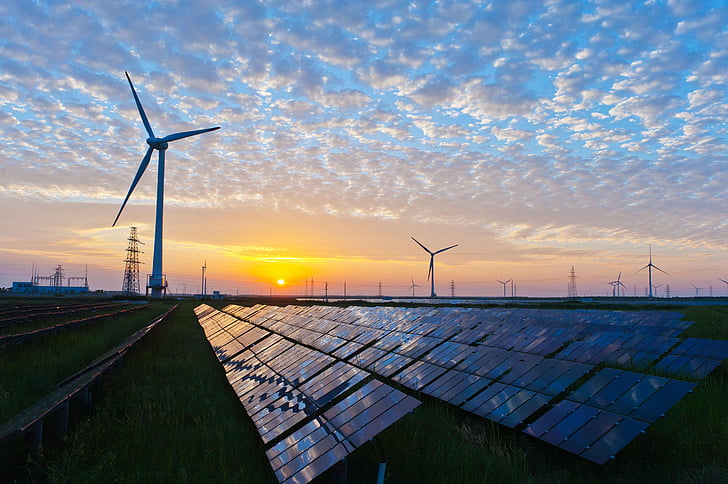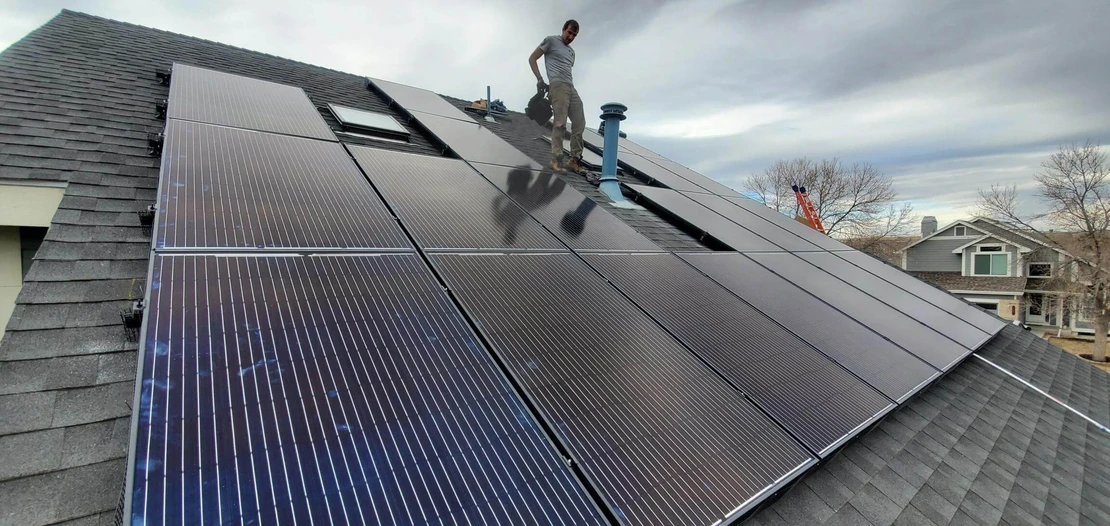Solar Power Blog

Environmental Risks that can be Reduced by Renewable Energy
Since the dawn of time, man has been one with the environment, using its resources to create the best possible life on earth. However, after a few millennia of development, the human race has most recently had the greatest negative effect on the natural environment since the last ice age.
So who is to blame? Although there are plenty of deforestation, unsustainable agriculture, and industrial manufacturing processes that are contributing to the greenhouse effect of rising global temperatures, burning fossil fuels like oil and gas are the absolute main cause of the majority of human impact.
In today’s world, nearly everyone in the United States will admit that renewable energies are considered “green,” whether or not they have a strong allegiance to traditional fuel sources. In this sense, it is no secret that renewable energy is good for the planet, but once you get into the details, many people do not know how or why.
To help those understand what is at risk, we’ve developed this article to showcase the effects that continued use of fossil fuels will have on the environment. While we are already experiencing some of these changes in the planet’s climate today, we will outline a few of the most important ways renewable energies can slow the rate of global warming impact and improve living conditions in the future.
The Environmental Risks of Today’s World
To save you some time with a few quick bullet points (and because it may be painful to read), here are the largest global environmental risks that are currently predicted to occur over the next century:
- Temperatures will continue to rise at non-uniform rates.
- The Arctic Ocean may become ice-free.
- The global sea-level rise is predicted to rise by 1-8 feet.
- There will be more frequent, strong, and intense hurricanes.
- There will also be more frequent and severe droughts and heatwaves.
- And finally, there will be extreme changes in precipitation patterns, including more frequent downpours.
The Effect on Human Health
In the natural world, the effects of climate change have a domino effect. While most plants and animals are extremely sensitive to their living conditions, even the smallest changes in weather patterns, temperature, and other conditions can threaten a species as they lose their natural habitat. In turn, lowered biodiversity and mass extinctions will quickly begin to impact the health of the human race.
Even more quickly, climate adjustments such as precipitation patterns, droughts, and heatwaves will have a dramatic effect on global food production, with lengthened frost-free and growing seasons. To explore more in-depth details about these facts, please see this climate change effect guide from NASA.
What’s at stake in the United States?
In the United States, amid heatwaves and more frequent downpours, much of New England’s prized food sources (both on land and offshore) are likely to become more and more compromised with rising sea levels and sensitive ecosystems.
With so many communities along the coast, even small changes in ocean conditions can have dramatic effects on seafood harvesting and local infrastructure. Larger, more frequent, and more devastating, storms also pose a dramatic economic threat on coastal regions, especially those with seasonal and tourism-based economies.
Looking south to Florida, the threat of imminent sea level rise is even more devastating for a state where the highest point is merely 345 feet in elevation. In fact, studies have shown that the sea level has risen over 8 inches in Florida since 1950. This has caused the state to spend over $4 billion to improve and protect infrastructure in response.
Into the Midwest, the land which grows so much of our country’s food may become increasingly unwell if subject to extreme heat and flooding from heavy downpours. Increased toxicity in the air and water quality also poses an extreme risk to the Great Lakes, the US’s largest freshwater source.
Out West, droughts and insect outbreaks will continue to threaten California’s growing regions while arid forests become increasingly at risk of beetle kill and wildfires. Large cities on the coast such as Los Angeles, San Francisco, and Seattle are subject to continued erosion with sea level rises, while citizens of inland locales like Denver and Phoenix are more likely to have health risks from poor air quality.
So… what are we doing about it?
As you can see, the dramatic effects of climate change can be a little daunting when beginning to realize its potential impact in your own neighborhood. While there is plenty of individual action that can be done (who can forget the age-old mantra: Reduce, Reuse, Recycle.) to improve local conditions, reversing and slowing the effects of climate change is much more complicated than simply sorting your garbage.
Thankfully, on a city, county, state, and national level, many groups of people are getting together to create businesses, non-profits, policies, and actions with the intention of improving the health of the planet. In almost all cases, such as in Biden's clean energy infrastructure plan, the fight against climate change is being led by the development of renewable energy.
How can Renewable Energy Benefit the Environment?
If renewable resources are used to replace fossil fuel consumption, it is extremely likely that this will lower the environmental impact of any particular energy user. What this means is that individuals, businesses, governments, and utilities each have their own ways in which adopting renewable energy can benefit both local and global conditions.
While emerging technologies are constantly being tested and adopted throughout the world, currently, the following are the most common forms of easily adoptable renewable energy:
- Solar (photovoltaic and thermal)
- Wind
- Biogas (landfill gas and wastewater treatment digester gas)
- Geothermal
- Biomass
- Hydroelectricity, wave, tidal power
Although it is true that every form of energy (no matter how green) will have some sort of effect on the environment, each of these renewable sources also has its own unique benefits when compared to fossil fuels. Above all, the three most important benefits of renewable energy are fewer greenhouse gas emissions, diversified supply, and dispersed economic development.

Fewer Greenhouse Gas Emissions
Although some greenhouse gases are emitted during the manufacturing and shipping processes, electricity production from both solar and wind (the two most popular renewables in the US) is completely emission-free. In areas with significant fossil fuel burning, decreased greenhouse gas emissions will dramatically have an immediate and lasting impact on local air quality and pollution.
Diversifying Energy Supply
Second, adopting a renewable energy power grid with many different fuel types will lower dependence on both domestic and imported fuels. Plus, with the continued development of the electricity storage industry, more and more renewable power can be stowed away in batteries. Not only does this help compensate for some renewable energy cons (i.e. solar power cannot be generated at night), but battery-backed systems also make homes, buildings, and communities more resilient to grid power outages during wildfires, hurricanes, and other devastating occurrences.
Dispersed Economic Development
Finally, the act of harvesting local renewable resources will also have a tremendous effect on local economies, with jobs in manufacturing, installation, and more. Whereas we know that many young men and women dream of working in the Texas oil fields, renewable energy development is much more localized in nature, with communities able to create jobs and decrease the local cost of electricity just as well.
For more information on the impact of renewable energy on the environment, we recommend this helpful resource from the EPA.
Final Thoughts
So although it can be easy to be pessimistic when the challenges of climate change may seem overwhelming, people all around the world are playing their part to slow down and reverse the rate at which global warming affects our environment. More than anything, renewable energy is one of the largest pieces of the puzzle when it comes to public health and sustainable life on earth.
For further reading, check out our blog on the importance of renewable energy for the future.



